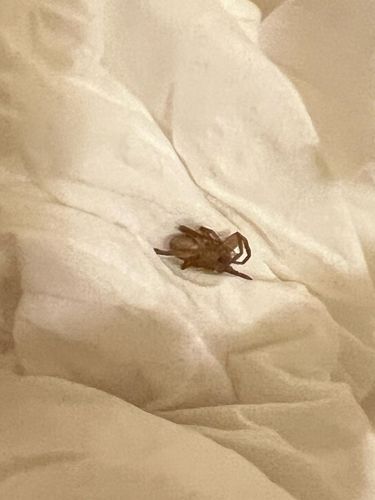Sac Spider
Scientific Name: Clubionidae (Sac Spiders)
Order & Family: Araneae (Spiders), Clubionidae (Sac Spiders)
Size: Generally 3-10 mm for the body length, with legs extending their overall size.

Natural Habitat
Sac spiders are typically found in a variety of habitats, including gardens, fields, forests, and indoors. They often build silken retreats (sacs) in rolled leaves, under rocks, in bark crevices, or in corners and crevices within homes.
Diet & Feeding
Sac spiders are active hunters and primarily feed on small insects and other arthropods. They do not typically build capture webs but instead actively search for prey, often at night.
Behavior Patterns
Sac spiders are nocturnal hunters. During the day, they retreat into silken sacs, which serve as shelters for resting, molting, and egg-laying. They are known for their fast movements and can be quite agile when pursuing prey or escaping threats.
Risks & Benefits
The primary risk associated with sac spiders is their bite. While not considered deadly, sac spider bites can be painful and may cause a localized red lesion, swelling, and itching. In some cases, the bite can lead to a necrotic lesion, though this is less common and usually not as severe as a brown recluse bite. Benefits include their role as predators of various pest insects, contributing to natural pest control.
Identified on: 9/12/2025